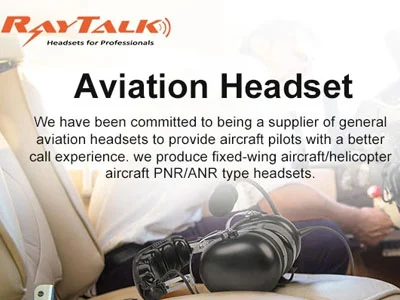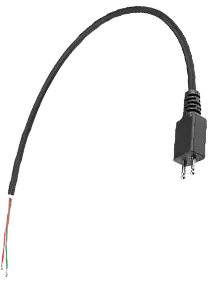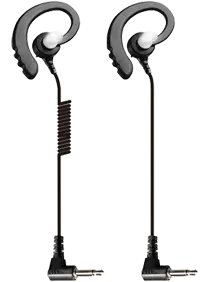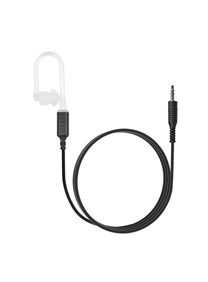Communication is absolutely critical while you're up in the air一and good quality aviation headsets make all the difference when you're communicating with the tower and other aircraft.
Whether you're a brand new pilot searching for your first headset before you start flight training or your a seasoned airline pilot, you're sure to find a headset that will meet your needs in RayTalk.
Choose the headset that's right for you- and your head.
An aviation headset is one of the most important accessories and tools a pilot has in his cockpit. Hundreds of different headset models and brands are on the market today, but which one should you get?
An aviation headset is one of the most important purchases you make as a pilot, apart from an aircraft of course. Your headset will be your tool to communicate with others inside and outside of the aircraft. Not only will it help you communicate, it will also play an even bigger role: protecting your hearing.
Our human hearing system is sensitive to sound frequencies between 20 Hz and 20,000 Hz and amplifies the sound between 2,000 and 5,000 Hz, since that's where our human voice is situated. While sound frequencies are measured in hertz (Hz), the volume or intensity of sound is expressed in decibels (dB). A quiet room is around 40dB and a normal conversation around 50-80dB. Our hearing is sensitive to these so-called sound pressure levels (SPL), but it's also very vulnerable to sounds with higher intensity, such as a rock concert or, more importantly in our case, airplane engines (120-130dB).
When you are exposed to sounds of 90dB and more, you risk damaging your inner ear, resulting in temporary or worse, permanent hearing loss.
Pilots are exposed to high volumes, and usually in low frequencies, often for long periods at a time. Hearing loss can and, unfortunately, will occur if you're not protecting your ears properly. The good news is, you can protect them! The key to this is having a quality aviation headset that does a good job handling and reducing these potentially
dangerous noises.
That's why having a decent aviation headset is crucial, not only for safety when flying, but also to protect your own ears. Since hearing loss is irreversible, prevention is always better than cure.
PH-100A PNR Aviation headset

Passive noise reduction (PNR)
Passive noise reduction headsets are usually the least expensive ones. They have noise suppressing foam that fills the earcup cavity and passively reduces the noise by sealing off sounds that come from outside the headset. For proper noise reduction, PNR headsets should fit firmly around the side of your head.
PH-100AC-BT Bluetooth Aivation headset

A common option for modern headsets is Bluetooth capability. Lots of devices, like GPS systems and smartphones, can be connected to headphones via Bluetooth, eliminating the need for extra cables in the cockpit. Having Bluetooth functionality on your headset can be a big advantage and a good reason to pay a lttle extra.
PH-400AC ANR Carbon fiber Aviation headset

The weight of your headset can be another factor to take into account. The Carbon fiber material is very light, this kind of Aviation headset weights just 9 ounces(255 grams)
PH-500 In Ear Ultra Light Weight Aviation headset

This PH-500 is a high performance ultra lightweight Aviation headset. Using the latest miniature audio transducer technology and a high sensitivity noise cancelling electret microphonewith amazing weight 150 grams only. This provides you a more comfortable flight experience and helps to reduce your fatigue suffering. All this means you suffer from less fatigue and can enjoy a more pleasurable user experience.
Our Aviation headsets can use for most of the Aircrafts in the market, mostly are the below brand and models:
Gulfstream G550
Airbus A320
Boeing 737
Cirrus SR 20/22 , SR2X Series
Piper PA28
Cessna (Cessna covers 98%)
Diamond DA20/40/42/62
Beech A36
Tecnam 2008, P92
Robin DR400
Socata TB10
ROTORWAY A600
BELL
Robinson
Headset Buying Tips
Here are some additional tips that can help you decide on the best aviation headset for your needs:
---Rule number one: you get what you pay for. Don't go cheap and buy a knock-off, how tempting that price tag might be, it may not hurt your wallet, but it can seriously impact your safety and ears.
---AIways try to test out the headset of your choice in flight, to make sure you've made the right decision. Often it's after flying with it the first few times that you can really experience the way it feels and functions. Don't be afraid to use the return service after purchasing a headset that doesn't fit as well as you hoped.
---If the headset of your choice does not have the most comfortable ear seals or headband, you can always purchase some aftermarket ones that provide significantly more comfort.
---Consider purchasing second-hand brand-name headsets. You can often find thousand-dollar headsets for a quarter of the price and pilots usually take very good care of their possessions.
---you decide to buy an ANR headset, consider the bulky battery pack and think about how it feels hanging on your neck or where you will put it.
---There are different types of microphones (Dynamic, Amplified Dynamic and Electret), make sure to check which ones work best with your radio!
---AIways remember you will wear the headset a lot. Cheap in the short term can become expensive (on your ears and comfort) in the long term.






